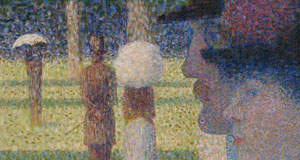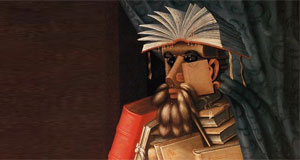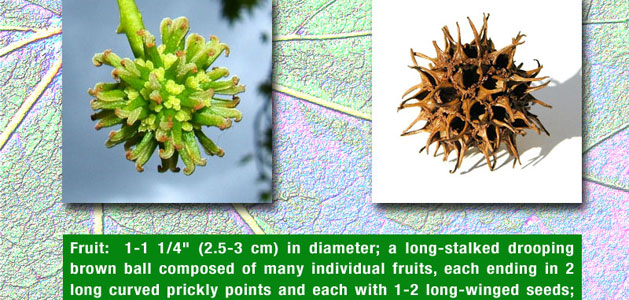Do Judge a Book by Its Cover
Students build visual literacy and engage in close reading as they investigate the text and imagery on book covers to make judgments about the content they might contain.

Task
While the proverbial warning “do not judge a book by its cover” may hold true for relationships and life, judging the plots and genres of real books by their covers makes for a captivating inquiry and literacy exploration. What exactly does a cover and book jacket tell us?
Your task is to “judge” the plot and the genre of a book you have not yet read, based only on the text and graphic elements on its cover.
Engage
In our social and media-rich world, students are surrounded by images that are supposed to make them think or feel a certain way. Exploring the designs of book covers is a great way to immerse students in close text and graphic document interpretive analysis, building active media literacy skills essential for success in today’s world.
A book cover designer uses text and imagery to get us to purchase and read a book by picking-up and accentuating themes and purposes in the content. Inform students that some of their favorite authors, such as Bryan Collier, started working in graphic design. R.J. Palacio of Wonder fame even specifically designed book covers!
Let students know that they are going to “judge” a book by its cover. Begin by modeling the process of “judging” a book cover with the entire class. Share a single book cover, such as the cover of Can You See Me? By Libby Scott and Rebecca Westcott.
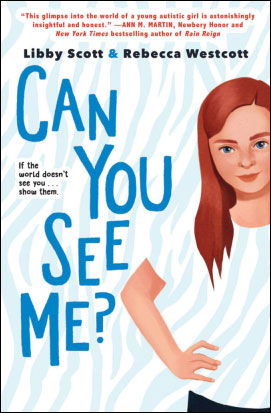
Look at the text on the front cover. What details provide hints that help you anticipate or predict the plot and genre of the book?
For example, the title of the book is expressed as a question. What does that suggest about the plot or genre of the book? The cover also states, “If the world doesn’t see you … show them.” What might this text suggest about the author’s purpose?
Create a list of the rest of the text on the cover. Discuss how each phrase “suggests” genre, plot, or details about the entire book.
The cover of Can You See Me? features a girl who is gazing at the outside world with her hand on her hip and inviting discussion or interaction. Students might notice that her top has the same light blue and white design as the background. Prompt students to ask how the designer’s “blending” the character into the background might be suggestive of the story’s content.
Give students time to work independently or in small teams to write a judgment about the content of the book cover you are exploring together. Ask students to present their judgment ideas, referencing the text and visual design elements on the cover to the entire class or in small groups.
Provide students with an actual summary of the book. Craft this on your own if you have read the book, or find examples on the publisher’s website.
Ask teams to compare the actual content of the book with their judgments based on the cover. Was any inaccuracy based on faulty analysis of the book cover or “faulty” design of the cover? Is the goal of a cover design to be an accurate summary of the contents?
Create
Curate a collection of covers you want to use with your students. Covers should focus on rich design that blends text and imaging to invite the readers into the book content. Be sure that titles used are not from books students have read before, since they would bring prior knowledge that would take away from analysis and close reading of text and graphic design.
Be sure students understand that the goal is not to get the content of the story “correct.” The goal is to use evidence to make an informed jugdment. If the judgment uses clear evidence from print text and visual design elements, it does not have to match the actual content to be valid.
Have students work in small teams to repeat the process you completed as a whole group. You can download a guide to support their thinking.
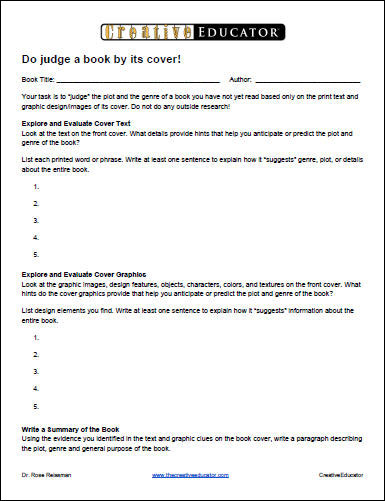
The student process should follow these steps:
- Evaluate the cover text — listing key words and phrases and postulating how these predict plot, genre, character, and details.
- Evaluate the cover graphics — listing key design elements and how postulating each of these predict plot, genre, character, and details.
After teams discuss their ideas, ask students to individually craft a summary of the book’s plot, genre, and general purpose based on evidence from printed text and cover images. Use this learning artifact as a performance assessment of close reading, visual literacy, and writing craft.
Share
Have students share their written judgments with you and also with their peers. In small groups, different from the ones above, have students share the cover of the work they explored and their ideas about the content based on their close reading of text and images. Peers share reactions to the evidence and critiques of the logic behind the judgment of content.
Return students to their original small groups and again have them read an accurate summary of the book and discuss how their close reading matched the book’s actual plot, genre, and details. Have each team share their experience with the rest of the class.
You might also task students with leading this exercise for an online or on-site parent evening to engage the community in building key media literacy skills. Students can find covers on their own or develop their own book cover designs that include text and graphic clues to challenge parents and peers to “judge” the book content and genre that would go logically with their designs.
Assessment
In this lesson, it does not matter if students’ evaluations of book cover images and text do not match the specifics of the actual published story. Part of what students should take away from this lesson is the key media literacy lesson that a book cover’s design elements can suggest more than one single logical plot.
Assessment is based on how well-grounded students’ judgments are based on close reading of text and images available. Reinforce this goal by developing and sharing a customized rubric with your students that rates their judgments objectively by the number of accurate print and visual cover data/details they correctly identify.
Evaluate each team’s initial observations after close reading and image inspection. Be sure to listen in on their discussions as well to identify misconceptions and observe how teams challenge team members thinking and back up their ideas with evidence. The individual paragraphs from each student showcasing their judgments about the content of the book provide a learning artifact that you can evaluate for both close reading, visual literacy, and writing craft.
Resources
Fisher, Douglas; Frey, Nancy; and Hattie, John. (2016) Visible Learning for Literacy, Grades K-12: Implementing the Practices that Work Best to Accelerate Student Learning.Corwin. ISBN: 1506332358
Powers, Alan. (2001) Front Cover: Great Book Jacket and Cover Design. Mitchell Beazley. ISBN: 1840004215
Powers, Alan. (2003) Children’s Book Covers: Great Book Jacket And Cover Design. Mitchell Beazley. ISBN: 1840006935
Standards
Common Core Anchor Standards for English Language Arts - Grade 4-10
Writing Standards
Text Type and Purpose
2. Write informative/explanatory texts to examine and convey complex ideas and information clearly and accurately through the effective selection, organization, and analysis of content.
Research to Build and Present Knowledge
7. Conduct short as well as more sustained research projects based on focused questions, demonstrating understanding of the subject under investigation.
Speaking and Listening Standards
Presentation of Knowledge and Ideas
5. Make strategic use of digital media and visual displays of data to express information and enhance understanding of presentations.
Reading Standards
Key Ideas and Details
1. Read closely to determine what the text says explicitly and to make logical inferences from it; cite specific textual evidence when writing or speaking to support conclusions drawn from the text.
2. Determine central ideas or themes of a text and analyze their development; summarize the key supporting details and ideas.
ISTE Standards for Students 2016:
3. Knowledge Constructor
Students critically curate a variety of resources using digital tools to construct knowledge, produce creative artifacts and make meaningful learning experiences for themselves and others. Students:
b. evaluate the accuracy, perspective, credibility and relevance of information, media, data or other resources.
6. Creative Communicator
Students communicate clearly and express themselves creatively for a variety of purposes using the platforms, tools, styles, formats and digital media appropriate to their goals. Students:
a. choose the appropriate platforms and tools for meeting the desired objectives of their creation or communication.
b. create original works or responsibly repurpose or remix digital resources into new creations.
d. publish or present content that customizes the message and medium for their intended audiences.







